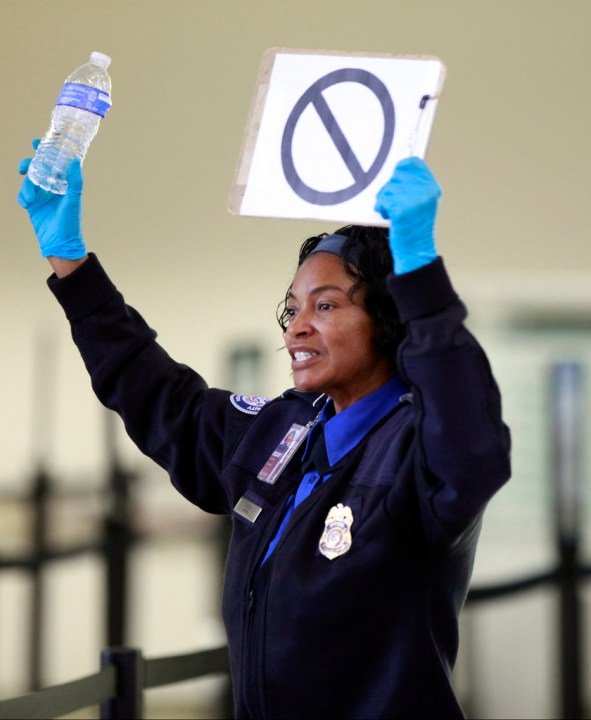
The Department of Homeland Security recently announced that travelers will no longer be required to remove their shoes when being screened through advanced imaging technology at airport security checkpoints. Since travelers who do not have a REAL ID to authenticate their identity are subject to greater security screening, they will almost certainly not be eligible.
This change in policy was announced by the DHS secretary, not by the administrator of the Transportation Security Administration (the deputy administrator is currently serving as the acting administrator). The Senate has not approved a new administrator since David Pekoske was relieved of his duties by the president on Jan. 20, 2025. Given that some senators have called for the TSA to be abolished, such cacophony likely means that a new TSA administrator will not be named too soon.
So why is this a problem?
The TSA security gauntlet is an intricate system of layers, many of which are invisible to travelers. The most visible aspects are what is deployed at airport security checkpoints, including advanced imaging technologies for passenger screening and CT scanners for passenger baggage. Some of the less visible layers include federal air marshals deployed on certain flights, hardened airplane cockpit doors, and Secure Flight, which vets passengers prior to their flight.
Risk-based security is the glue that ties all such layers together. It informs the use of security technologies and the creation of policies such that the air system can be maximally secured with minimal passenger inconvenience.
Recall that after the Sept. 11 attacks in 2001, all passengers were treated the same from a security perspective. Such a one-size-fits-all approach was expensive and inconvenient to passengers, with little evidence that it made the air system more secure. It was also unsustainable.
This led to the creation of TSA PreCheck, which gives passengers access to expedited screening lanes, where they can keep their shoes on when being screened and keep their electronic devices in their carry-on bag. TSA Precheck passengers have voluntarily gone through a background check — this is why they can be subjected to expedited, less intrusive physical screening at checkpoints.
Allowing passengers with a REAL ID to keep their shoes on when being screened is, in and of itself, not bad. It is always easier to tighten security procedures than to relax them. In practice, passengers may discover that when wearing certain types of footwear, like work or hiking boots, choosing to remove them voluntarily may end up saving them time, since the full body screener may flag them for additional screening, which will then require the footwear to be removed anyway.
What is next in airport security? Belts are likely on the docket for consideration, although the same delays may occur if the full body scanners flag certain belts for additional screening.
The one that is on most people’s minds is the liquid restriction. The United Kingdom relaxed its liquid policy at certain airports when it installed CT scanners for carry-on bags. The acting TSA administrator recently indicated that this policy would stay in place in the U.S. until around 2043, given the time needed to fully deploy CT scanners for carry-on bags at all U.S. airports.
To confuse the issue further, the DHS secretary has now indicated that the liquid policy is up for discussion, provided the necessary guardrails remain in place to keep the system secure. Perhaps relaxing the liquid restriction for PreCheck passengers traveling from airports with CT scanners will be the next step forward.
Most people would welcome this policy change. But what can be done to ensure that the system’s security remains sufficiently robust?
The answer is not promises from industry partners offering the newest and flashiest scanning technology to detect liquid explosives. It is, rather facial recognition.
By requiring all passengers’ identity to be authenticated using facial recognition, this layer will fill in holes left by relaxing some physical screening procedures.
Facial recognition at airport security checkpoints has been a lightning rod of controversy for some time. A group of senators have called for it to be paused, based on concerns about personal privacy and civil liberties. The Travelers Privacy Protection Act of 2025 would give anyone the right to opt out of facial recognition being used to authenticate their identity. If such an act becomes law, it would set airport security back by a decade, by locking airport security into its threat item-centric paradigm, rather than focusing on threatening people, which is where the greatest risks reside.
If the DHS intends to relax more of the security layers in place to protect the aviation system, ensuring that facial recognition continues to be a centerpiece of their strategy is critical. Putting a Senate-approved TSA administrator in place would also be important, to provide confidence that the collection of security layers being used is keeping the air system secure for all travelers.
Sheldon H. Jacobson, Ph.D., is a computer science professor in the Grainger College of Engineering at the University of Illinois Urbana-Champaign. He has researched risk-based aviation security for over 25 years, which provided the technical justification for TSA PreCheck.


